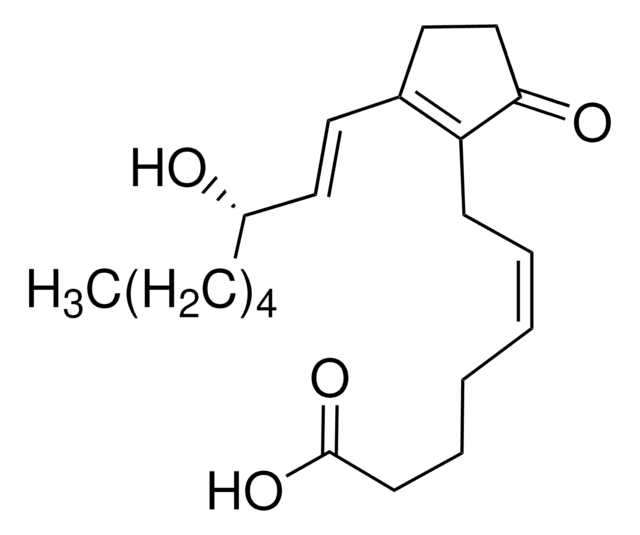The pH of a solution containing Poloxamer 188 may change over time due to factors such as hydrolysis or oxidation. The pH stability of Poloxamer 188 solutions has not been conducted. However, end users are encouraged to periodically monitor the solutions to ensure their stability and efficacy.
P5556
Disolución de poloxamer 188
10%, sterile-filtered, BioReagent, suitable for insect cell culture
Sinónimos:
Nonionic copolymer surfactant
Seleccione un Tamaño
52,30 €
Seleccione un Tamaño
About This Item
52,30 €
Productos recomendados
descripción
non-ionic
Nivel de calidad
esterilidad
sterile-filtered
Línea del producto
BioReagent
mol peso
average mol wt 8350
concentración
10%
técnicas
cell culture | insect: suitable
impurezas
endotoxin, tested
temperatura de transición
cloud point ≥100
HLB
29
cadena SMILES
O2C(C2)C.O1CC1
InChI
1S/C3H6O.C2H4O/c1-3-2-4-3;1-2-3-1/h3H,2H2,1H3;1-2H2
Clave InChI
RVGRUAULSDPKGF-UHFFFAOYSA-N
Descripción general
Aplicación
Acciones bioquímicas o fisiológicas
Código de clase de almacenamiento
10 - Combustible liquids
Clase de riesgo para el agua (WGK)
WGK 2
Punto de inflamabilidad (°F)
Not applicable
Punto de inflamabilidad (°C)
Not applicable
Equipo de protección personal
Eyeshields, Gloves, multi-purpose combination respirator cartridge (US)
Elija entre una de las versiones más recientes:
¿Ya tiene este producto?
Encuentre la documentación para los productos que ha comprado recientemente en la Biblioteca de documentos.
Los clientes también vieron
-
How does the pH of the Poloxamer 188 solution fluctuate throughout a 24-month period?
1 respuesta-
¿Le ha resultado útil?
-
Filtros activos
Nuestro equipo de científicos tiene experiencia en todas las áreas de investigación: Ciencias de la vida, Ciencia de los materiales, Síntesis química, Cromatografía, Analítica y muchas otras.
Póngase en contacto con el Servicio técnico



